By German Tirado, July 30, 2025
Table of Contents
Introduction: Loyalty’s Siren Song
Loyalty vs Acquisition: What the Science Says
Double Jeopardy: The Law That Disproves Loyalty-Led Growth
Growth = Penetration, Not Deeper Bonds
Why Loyalty Rises as a Result (Not a Cause)
B2B Brands: Still Not Special
The 95-5 Rule: Why Loyalty Focus Misses 95% of Buyers
Why Loyalty Programs Don’t Drive Growth
What Actually Works: Mental and Physical Availability
Action Steps for Real Growth
Conclusion: Stop Selling to the Choir
FAQ
Works Cited
1. Introduction: Loyalty’s Siren Song

In the world of marketing strategy, few myths have endured as stubbornly as the idea that customer loyalty is the main driver of brand growth. It’s become a mantra repeated across marketing blogs, business schools, agency pitches, and boardrooms: “It’s cheaper to retain a customer than acquire a new one.” “Focus on your core audience.” “Turn customers into brand advocates.” These phrases sound reasonable—but they’re dangerously misleading.
The belief that emotional loyalty or customer advocacy fuels long-term brand growth has been thoroughly disproven by empirical research. Yet marketers continue to allocate large portions of their budgets to loyalty programs, customer retention strategies, personalized CRM campaigns, and brand purpose messaging aimed at deepening existing relationships. Unfortunately, these tactics may build satisfaction or improve margins—but they don’t build brands.
Why not?
Because the true engine of brand growth is customer acquisition. This isn’t just theory—it’s been observed in hundreds of product and service categories, in both B2C and B2B settings. Research from the Ehrenberg-Bass Institute shows that growing market share comes from increasing your number of buyers, especially light buyers and non-buyers, not from squeezing more revenue out of your existing customers.
Larger brands always have more buyers, and they appear to have more “loyal” customers—but that loyalty is simply a mathematical consequence of their size, not the cause of their growth. In fact, focusing too narrowly on retention means missing out on the 95% of potential customers who are out-of-market at any given time [95-5].
This article will challenge the popular loyalty narrative and show you what actually drives scalable, sustainable brand growth. We’ll explore:
Why the Double Jeopardy Law proves that acquisition beats loyalty
How mental and physical availability drive customer behavior
Why customer acquisition marketing strategies are essential for both B2B and B2C
What marketing science teaches us about penetration-led growth
The role of category entry points (CEPs) in building mental availability
If you’ve ever wondered whether your brand should invest more in loyalty or acquisition—this article will give you the definitive, evidence-based answer.
2. Loyalty vs Acquisition: What the Science Says

Across decades of marketing science research—B2B and B2C, product and service categories, global markets—one truth stands out:
“There is one strategy to grow in B2B – primarily from new customer acquisition, expanding the size of your customer base”
[39†The Double Jeopardy Law in B2B†L5-L15].
This law is not an opinion or trend. It’s a repeatable, predictable, empirical generalization—a scientific truth observed across hundreds of categories.
3. Double Jeopardy: The Law That Disproves
Loyalty-Led Growth
The Double Jeopardy Law reveals a consistent pattern:
Smaller brands have fewer customers.
Those fewer customers are also less loyal (buy less often, switch more).
“Smaller brands suffer twice: they have fewer customers, who are also less loyal”
[HBG1].
In contrast, bigger brands enjoy:
More customers.
Slightly more loyal customers.
But that loyalty isn’t earned through purpose, relationships, or emotional storytelling—it’s just a side effect of having more buyers.

4. Growth = Penetration, Not Deeper Bonds

Growth comes from penetration—getting more people to buy from you. This means attracting more light buyers, more first-timers, more people who have never heard of you before.
Loyalty-driven marketing aims at the tiny few already buying. That’s not scalable.
“Growth comes from gaining more customers from all other brands, proportionate with competitor share”
[37†How do B2B Brands Compete†L5-L20].
If you’re not increasing your customer base, you’re not growing. It’s that simple.
5. Why Loyalty Rises as a Result (Not a Cause)

When a brand grows its customer base, it inevitably increases loyalty metrics—because averages work that way. With more buyers, some will buy more often just by chance.
This is crucial: loyalty is the effect of scale, not the cause.
Trying to drive growth by “building loyalty” is like trying to get fit by buying smaller clothes.
6. B2B Brands: Still Not Special

“But we’re B2B,” some will say. “Relationships matter more here.”
Nope.
B2B brands also follow the same growth laws. In business banking, professional services, and even categories like fuel and software, the same patterns hold.
“Lack of awareness is a bigger barrier to acquisition than non-customer brand rejection”
[38†Brand Rejection in B2B†L20-L30].
Rejection levels in B2B are typically under 10%. The challenge isn’t that people hate your brand. It’s that they don’t think of it at all.
7. The 95-5 Rule: Why Loyalty Focus Misses 95% of Buyers

Jenni Romaniuk and the Ehrenberg-Bass team revealed that 95% of buyers are out-of-market right now [95-5].
That means only 5% are actively shopping. If your marketing only speaks to current or recent buyers, you’re ignoring the vast majority of future growth.
Loyalty marketing speaks to the 5%.
Brand-building speaks to the 95%.
Guess which one wins over time?
8. Why Loyalty Programs Don’t Drive Growth

Most loyalty strategies fail because they rely on faulty assumptions:
Assumption 1: Customers are loyal due to emotional bonds.
Reality: Most people are light buyers who don't think about you much [HBG1].
Assumption 2: Rewarding loyalty changes behavior.
Reality: Buyers already behave predictably; rewards don’t shift that curve significantly.
Assumption 3: We can “move people up the loyalty ladder.”
Reality: There is no ladder—there is just a predictable distribution of light and heavy buyers [HBG2].
Loyalty programs are great for customer satisfaction. Just don’t confuse them with growth drivers.
9. What Actually Works: Mental and Physical Availability

To grow, you need two things:
Mental Availability: Be thought of in more buying situations. This means linking your brand to more Category Entry Points (CEPs)—the cues that buyers think of when entering the market [40†Category Entry Points in B2B†L5-L25].
Physical Availability: Be easy to find and buy. This includes channels, formats, price points, and accessibility.
Big brands are easier to think of and easier to buy. That’s why they win.
10. Action Steps for Real Growth

Here’s your blueprint:
Map Category Entry Points (CEPs)
Identify the “when,” “why,” “where,” and “who with” scenarios in which buyers consider your category.
Create Broad-Reach Advertising
Use wide-reaching media to get in front of both current and future buyers. Mass reach is efficient because of the 95-5 Rule.
Link Ads to CEPs
Rotate your creative around different CEPs—don’t hammer one benefit endlessly. Rotate and refresh.
Make Buying Easy
Widen your distribution, improve findability, and reduce friction. This applies online, in-store, and through sales reps.
Track Penetration, Not Just Loyalty
Measure:
Market penetration %
Mental Market Share (share of minds across CEPs)
Distinctive Asset Salience
% of category buyers reached
11. Conclusion: Stop Selling to the Choir – Build Growth Through Acquisition
It’s time to put the loyalty myth to rest.
If you want to build a brand that grows consistently, captures market share, and stays top-of-mind, then customer acquisition—not loyalty—is your primary lever. The scientific evidence is clear: brand growth comes from acquiring more customers, not from trying to deepen emotional bonds or maximize retention metrics.
Big brands aren’t loved into dominance—they become dominant by being bought by more people, more often. Their apparent “loyalty” is a result of having high penetration. This is the law of Double Jeopardy, and it holds true across industries, from fast-moving consumer goods to complex B2B services.
If your marketing strategy is disproportionately focused on loyalty programs, personalized retention campaigns, or customer lifecycle funnels, you may be neglecting the far larger pool of potential buyers who’ve never tried your brand. This is especially dangerous in categories where light buyers make up the bulk of total revenue. Ignoring them is ignoring growth.
Instead, prioritize what marketing science proves works:
Expand your mental availability by building memory structures across a wide range of Category Entry Points (CEPs)—those moments, needs, and contexts when buyers enter the market.
Increase your physical availability by ensuring your product or service is easy to find, easy to buy, and available in as many channels, formats, and locations as possible.
Invest in broad-reach advertising that speaks to both in-market and out-of-market buyers. Remember, 95% of your category isn’t buying today—but they will be in the future [95-5].
Build distinctive brand assets that help buyers recognize you instantly in any context—online, offline, on a shelf, or in a proposal.
In other words, stop selling to the choir. Start building a bigger congregation.
A brand that wants to grow must commit to penetration-focused marketing, not just customer relationship management. It must aim to reach all category buyers, not just superfans. It must invest in long-term brand building, not short-term activation disguised as loyalty.
So whether you're marketing an enterprise software solution, a consumer product, or a professional service, the growth playbook is the same:
Be remembered
Be easy to buy
Be bought by more people
That’s not a slogan. That’s marketing science.
12. Frequently Asked Questions (FAQs)
Q1: Isn’t it cheaper to retain existing customers than to acquire new ones?
Yes, retention may be cheaper on a per-customer basis—but retention doesn’t drive growth. According to marketing science, brand growth comes from acquiring more customers, especially light buyers and non-buyers. Retention tactics may improve profitability or customer satisfaction, but they don’t increase market share [HBG1].
Q2: Don’t loyalty programs help increase repeat purchases and advocacy?
Loyalty programs can encourage small behavioral shifts—but they don’t scale. Most people are light buyers, not loyalists. And the Double Jeopardy Law shows that bigger brands only appear to have more loyalty because they have more customers overall—not because of special programs [HBG1].
Q3: What about emotional branding? Doesn’t that create deeper connections that fuel loyalty and growth?
While emotional campaigns can help improve mental availability, the idea that consumers form deep, lasting emotional bonds with brands is largely unsupported. Most buying decisions are low involvement and based on salience and availability—not love. Distinctive assets and category entry point coverage are more predictive of growth than emotional engagement [BDA].
Q4: Does this apply to B2B brands as well, or just consumer brands?
Yes, the same laws apply in B2B marketing. Research confirms that B2B brands grow primarily through acquisition, not retention, and that they also follow the patterns of Double Jeopardy and Duplication of Purchase. Building mental and physical availability is just as critical in B2B categories as it is in B2C [39†The Double Jeopardy Law in B2B†L5-L15].
Q5: Should we stop all retention efforts completely?
Not necessarily. Retention tactics can improve operational efficiency and customer experience, but they shouldn’t dominate your marketing strategy. The majority of your marketing budget and creative energy should be focused on customer acquisition, broad reach, and brand building if you want to grow [95-5].
Q6: How can I measure success if I’m shifting focus to acquisition?
Track metrics aligned with penetration-based growth:
Market penetration (% of category buyers)
Mental Market Share (share of mind across CEPs)
Distinctive Asset Salience
Category buyers reached per campaign
Share of search and branded queries over time
These KPIs provide better insight into brand growth than loyalty metrics alone.
Works cited
[HBG1]
Sharp, Byron. How Brands Grow: What Marketers Don’t Know. Oxford University Press, 2010.
— The foundational text establishing that penetration, not loyalty, drives growth, and introducing the Double Jeopardy Law.
[HBG2]
Sharp, Byron, and Romaniuk, Jenni. How Brands Grow: Part 2. Oxford University Press, 2015.
— Expands on the original book with global data and additional laws like Duplication of Purchase.
[BDA]
Romaniuk, Jenni. Building Distinctive Brand Assets: Drive Memory Availability to Grow Brands. Oxford University Press, 2023.
— Covers how assets like colors, shapes, and slogans contribute to brand salience and mental availability.
[95-5]
Dawes, John. “Advertising effectiveness and the 95-5 rule: Most B2B buyers are not in the market right now.” Ehrenberg-Bass Institute, LinkedIn B2B Institute, 2023.
— Shows that only 5% of category buyers are in-market at any time; brand building must reach the 95% who are not.
[39†The Double Jeopardy Law in B2B†L5-L15]
Romaniuk, Jenni, Dawes, John, and Faghidno, Sahar. The Double Jeopardy Law in B2B Shows the Way to Grow. Ehrenberg-Bass Institute, 2023.
— Demonstrates that B2B brands also follow Double Jeopardy; acquisition, not loyalty, drives growth.
[37†How do B2B Brands Compete†L5-L20]
Romaniuk, Jenni. How Do Business-to-Business (B2B) Brands Compete. Ehrenberg-Bass Institute, 2023.
— Describes how B2B brands win by gaining customers from all brands, not by differentiation.
[38†Brand Rejection in B2B†L10-L30]
Romaniuk, Jenni. Brand Rejection in B2B: Incidence, Reasons and Implications. Ehrenberg-Bass Institute, 2023.
— Finds that brand rejection is rare in B2B; lack of awareness is the bigger obstacle to growth.
[40†Category Entry Points in B2B†L5-L25]
Romaniuk, Jenni. Category Entry Points in a Business-to-Business (B2B) World. Ehrenberg-Bass Institute, 2023.
Address
Phone: 725-240-6870
Email : [email protected]
Address : 6440 Sky Pointe Dr. #140-341 Las Vegas, NV 89131
Artificial Intelligence
Marketing & Branding
Marketing & Branding
©2025 Max Digital Edge | All Rights Reserved
